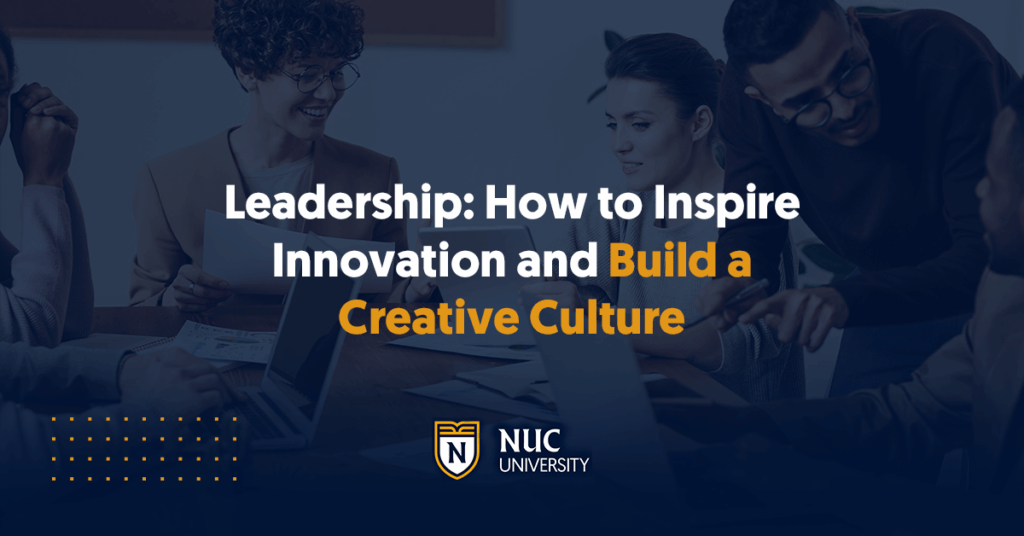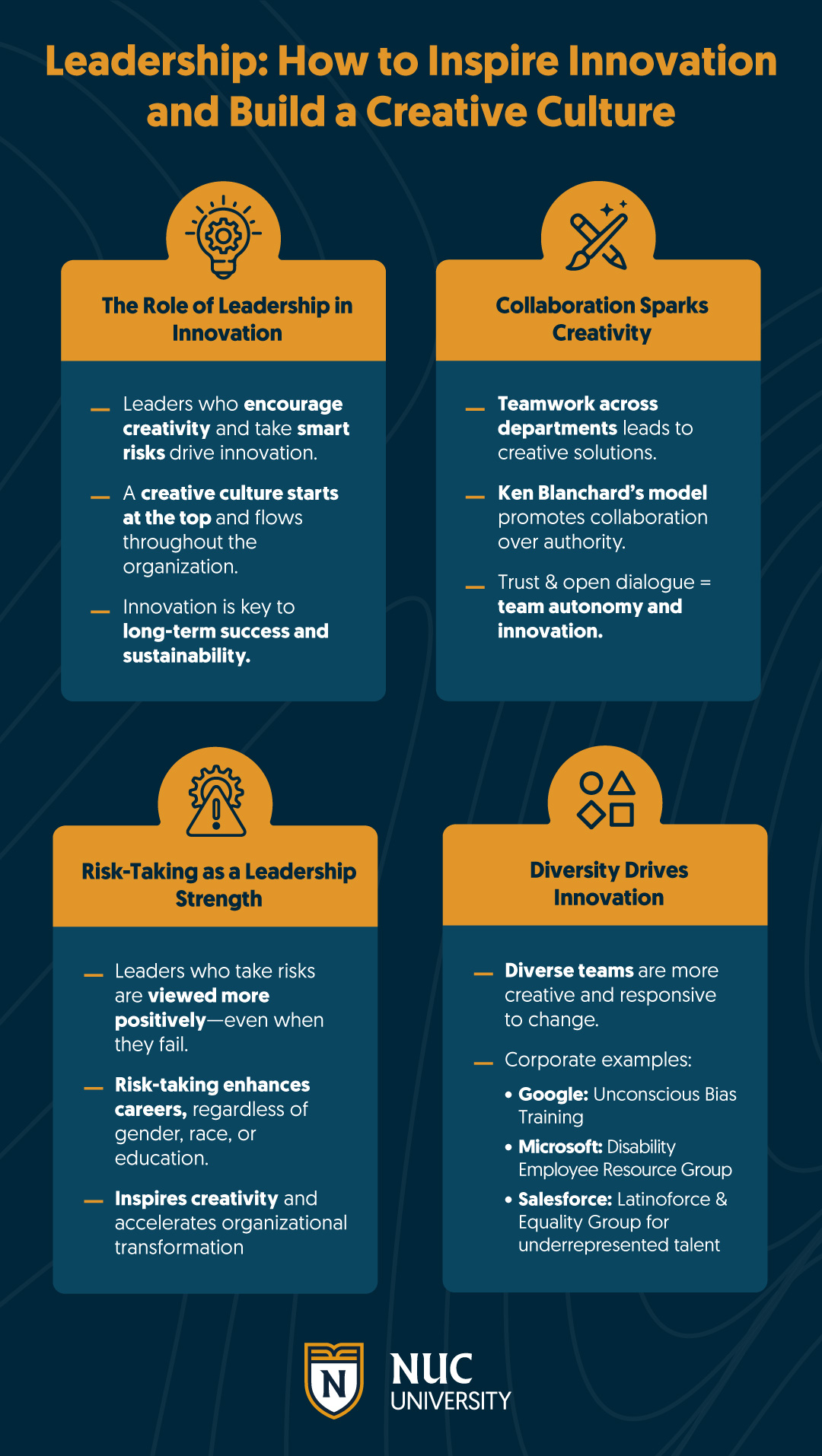An effective leader must be skillful in harnessing a team’s full potential. Research shows that this is best achieved by taking smart risks, encouraging teamwork, and embracing cultural diversity.
Innovation is a defining factor for any project and is crucial for ensuring the success and sustainability of organizations. A culture of creativity should extend from top management to all employees, and leaders play a crucial role in fostering collaboration, sharing perspectives, promoting continuous growth, and inspiring others.
In today’s fast-paced business and educational environments, where constant updates and changes are necessary, leaders must encourage calculated risk-taking and collaboration among colleagues. Additionally, they should leverage social diversity to maximize the benefits of different perspectives.
Taking Risks to Inspire Others
In the workplace, leaders frequently make decisions involving some degree of risk. Choosing projects, adopting new technologies, or delegating tasks all carry uncertainties and challenges. Therefore, developing the ability to assess and take strategic risks is essential, as it requires informed decision-making while avoiding costly mistakes.
A 2019 study by Fisk, S.R., and Overton revealed that taking risks at work is generally viewed positively, even when the outcome is unsuccessful. Two experiments showed that leaders who embrace risk tend to have better career prospects compared to those who avoid it, regardless of their success or failure. Furthermore, this pattern was consistent across gender, race, and education levels, suggesting a broad cultural agreement in this matter.
Various studies highlight that leaders who take risks are more likely to be valued by their employees, inspire greater creativity, and drive organizational change.
Promoting Collaboration Leads to Creative Solutions
Collaboration is essential for building an innovative culture. When employees from different departments and hierarchies work together, they exchange ideas that lead to creative and effective solutions.
Ken Blanchard, a renowned management expert, emphasizes that effective leadership is grounded in collaboration and team support. His situational leadership approach advocates for adapting leadership styles based on team needs, encouraging autonomy and skill development. Leaders who foster open communication and trust—rather than imposing authority—help employees feel more confident about exploring ideas and taking calculated risks.
Collaboration can be encouraged through open communication, feedback sessions, or brainstorming sessions. Allowing all team members to share their viewpoints enhances decision-making and facilitates the resolution of difficult problems.
Embracing Diversity to Foster Creativity
Bringing together people from different cultural backgrounds, educational paths, and professional experiences creates the perfect environment for fresh perspectives and innovative problem-solving approaches.
Many leading companies have initiatives focused on promoting diversity to drive improvement. Google, for example, offers Unconscious Bias Training to help employees identify and counteract implicit biases. The company’s Diversity Annual Report has led to policies aimed at increasing the representation of women and minorities in technical and leadership positions.
Microsoft’s Disability Employee Resource Group supports employees with disabilities through community-building efforts. Meanwhile, Salesforce’s Equality Group fosters professional development programs and mentorship opportunities for employees with disabilities, LGBTQ+ individuals, and people from diverse backgrounds. A noteworthy program, Latinoforce, empowers Latino employees and allies to “develop their careers, strengthen their leadership skills, and thrive personally and professionally.”
Studies confirm that diverse teams tend to be more creative, innovative, and adaptable, making them better equipped to respond to market changes and customer needs.
Sources:
Bold or reckless? The impact of workplace risk-taking on attributions and expected outcomes
https://journals.plos.org/plosone/article?id=10.1371/journal.pone.0228672
Entrepreneurial leadership and new ventures: Creativity in entrepreneurial teams. Creativity and Innovation Management
https://onlinelibrary.wiley.com/doi/10.1111/j.1467-8691.2007.00439.x
Empowering leadership, risk-taking behavior, and employees’ commitment to organizational change: The mediated moderating role of task complexity
https://www.mdpi.com/2071-1050/12/6/2340
Collaborative Leadership… none of us is as smart as all of us
https://www.linkedin.com/pulse/collaborative-leadership-none-us-smart-all-ray-carnes/
Who Wants to Lead? Anticipated Gender Discrimination Reduces Women’s Leadership Ambitions
https://www.jstor.org/stable/48588953
Google, Make work better
https://rework.withgoogle.com/en/#watch-unconscious-bias-at-work
Microsoft, Inclusive hiring for people with disabilities
https://www.microsoft.com/en-us/diversity/inside-microsoft/cross-disability/hiring
Salesforce, Equality Groups
https://www.salesforce.com/company/equality-groups/





